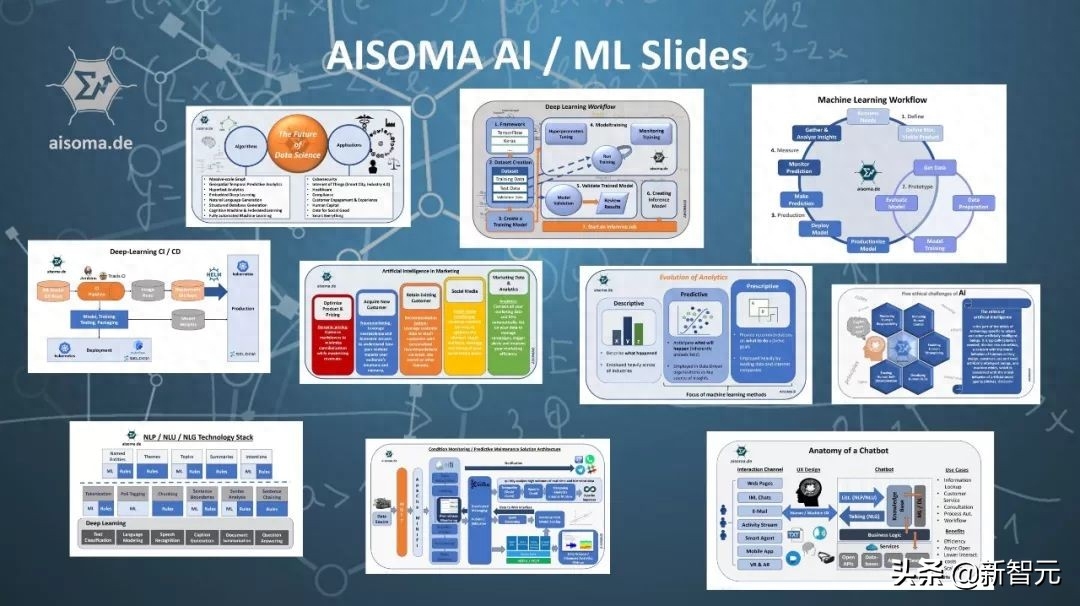
[Introduction to New Wisdom]10 useful slides and brief explanations to help you understand AI, a picture is worth a thousand words.
"A picture is worth a thousand words", 10 useful slides and short explanations to help you understand AI.
1. The evolution of analytics
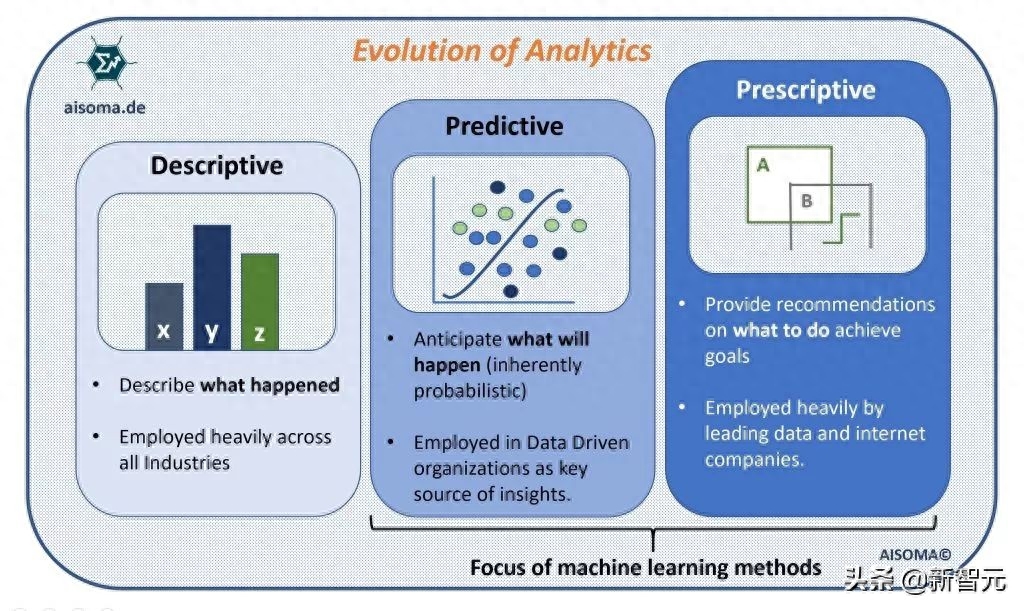
Analysis is the process of discovering, interpreting, and communicating meaningful patterns in data, and applying those patterns to effective decisions. In other words, analytics can be understood as the organization of connections between data and effective decisions within an organization. Particularly in documented information-rich domains, analysis relies on the simultaneous application of statistics, computer programming, and operations research to quantify performance.
Organizations can apply analytics to business data to describe, predict, and improve business performance. Specifically, intra-regional analysis includes predictive analysis, prescriptive analysis, enterprise decision management, descriptive analysis, cognitive analysis, big data analysis, retail analysis, supply chain analysis, storage classification and stock keeping unit optimization, marketing optimization and marketing mix. Modeling, network analysis, call analysis, speech analysis, sales force sizing and optimization, price and promotion modeling, predictive science, credit risk analysis and fraud analysis.
Because analysis requires extensive calculations, the algorithms and software used for analysis make use of the most popular methods in computer science, statistics, and mathematics.
2. The future of data science
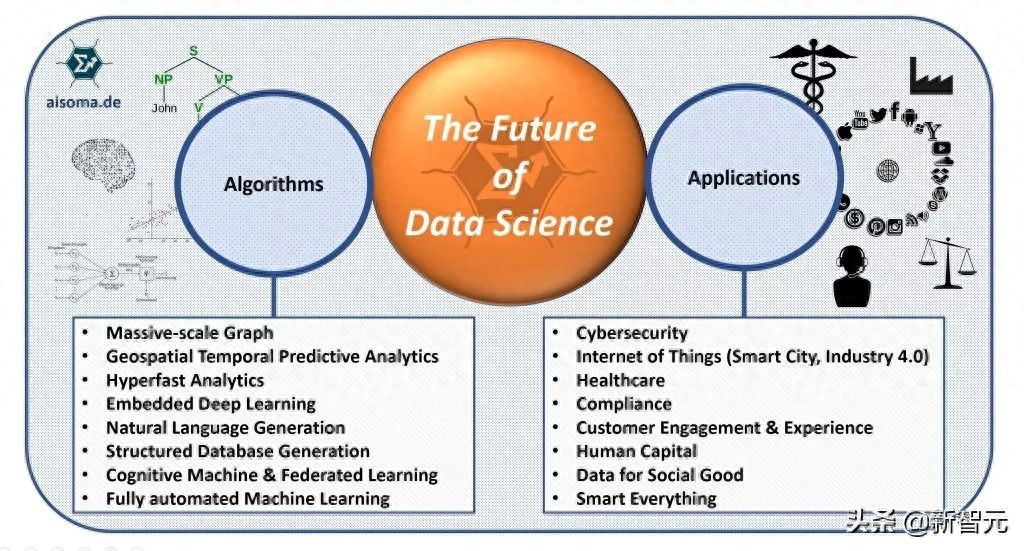
It is widely believed that future data science projects will scale to new heights due to advanced tools, requiring more human experts to handle highly complex tasks very efficiently. However, according to the McKinsey Global Institute (MGI), in the United States alone, there will be a critical shortage of approximately 250,000 data scientists over the next decade. The question is whether machines can enable seamless collaboration between technology, tools, processes and end users.
Automated tools and assistants can help human minds complete tasks faster and more accurately, but machines can never replace human thinking. At the heart of problem solving is intellectual thinking, which no machine, no matter how complex, can replicate.
3. Machine learning workflow
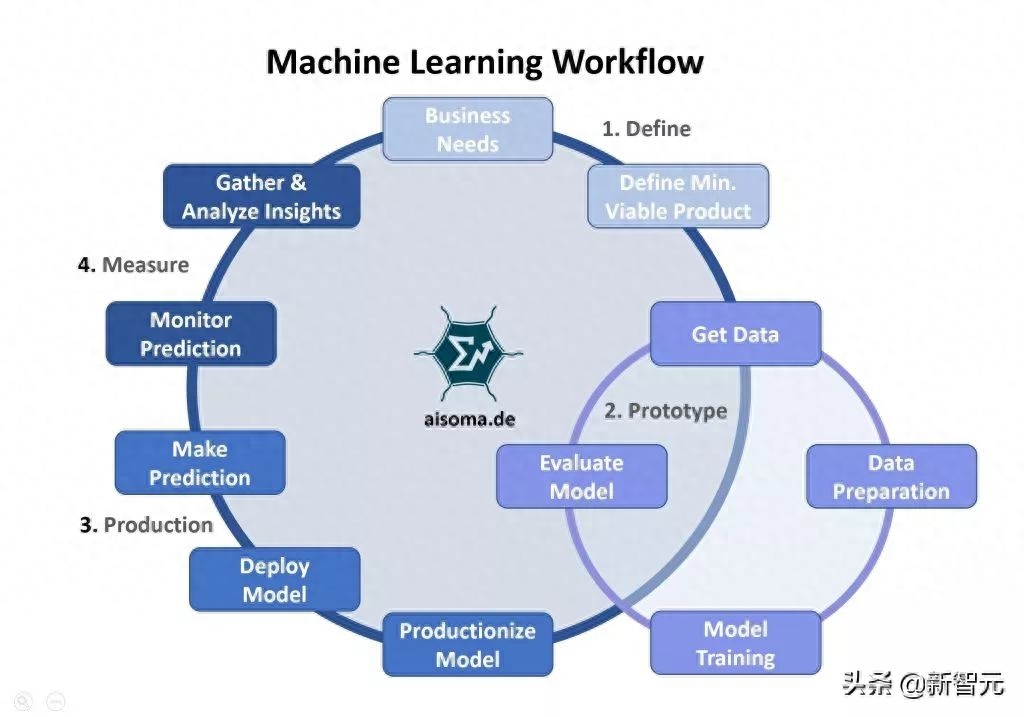
4. Deep learning workflow
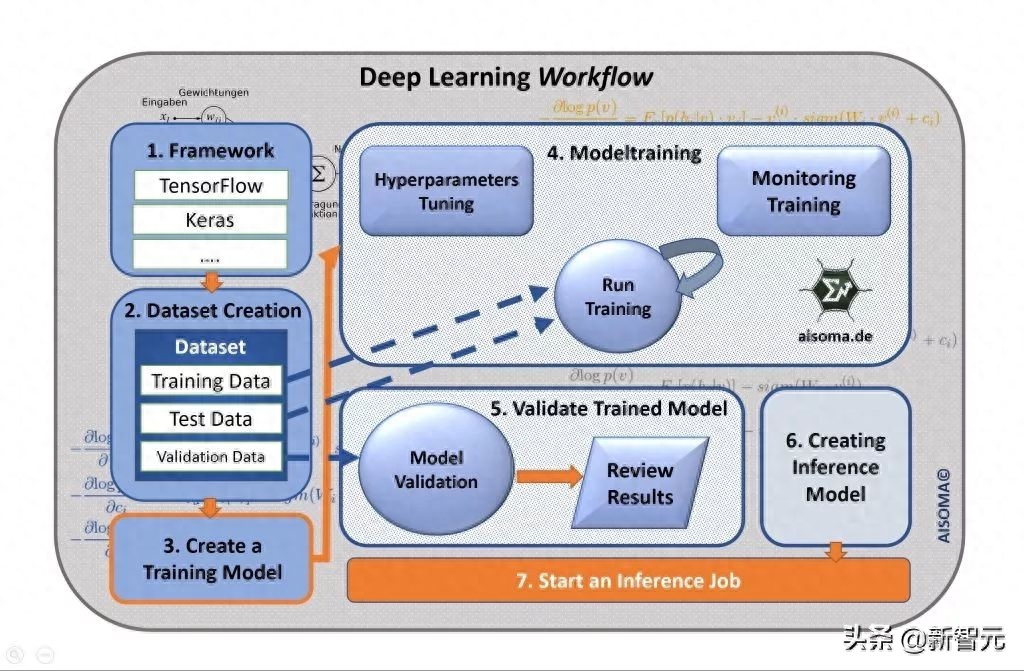
5. Deep learning continuous integration and delivery
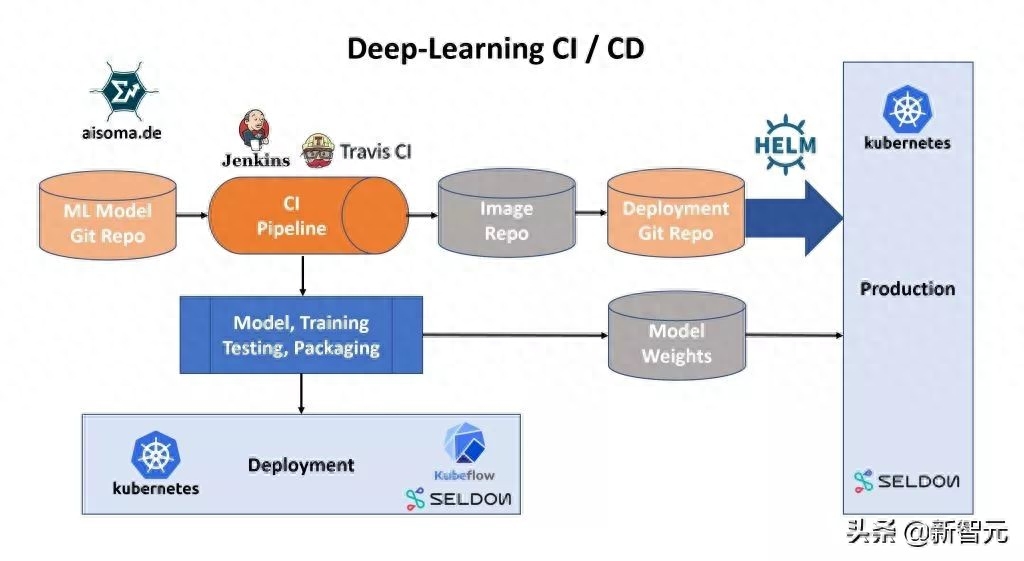
6. Analyzing Chatbots
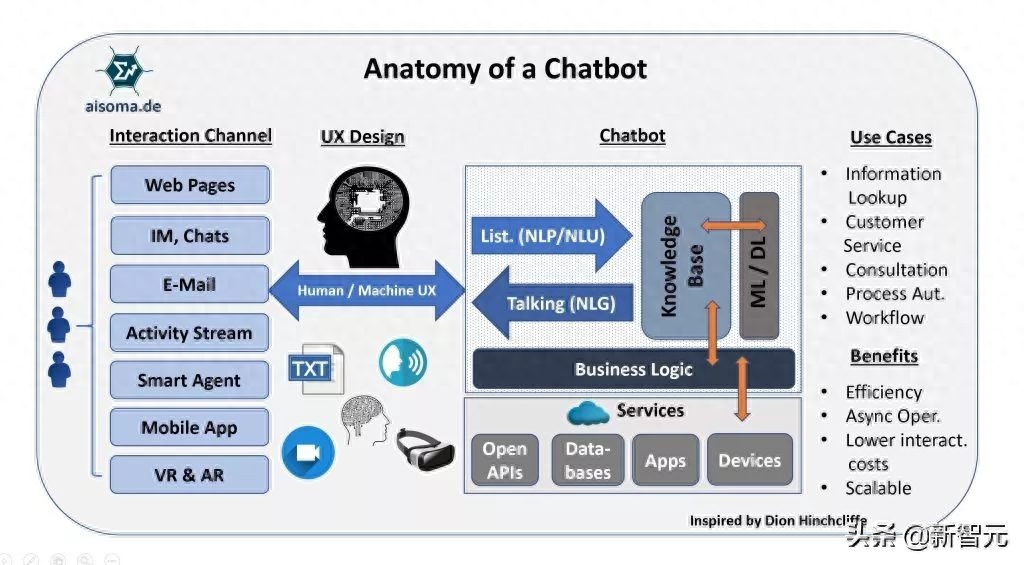
7. Five ethical challenges facing artificial intelligence
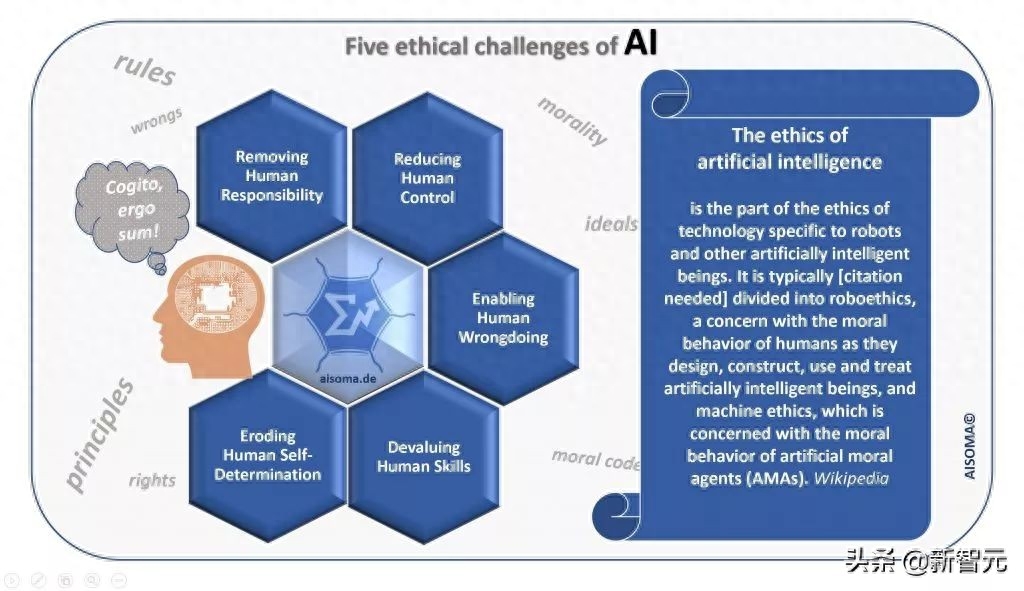
Artificial intelligence ethics is a part of the technical ethics specific to robots and other artificially intelligent creatures. It is usually divided into robot ethics (roboethics) and machine ethics (machine ethics). The former focuses on the moral behavior of humans when designing, building, using and treating artificial intelligence creatures, and the latter focuses on the moral behavior of artificial moral actors (AMAs).
8. NLP / NLU technology stack
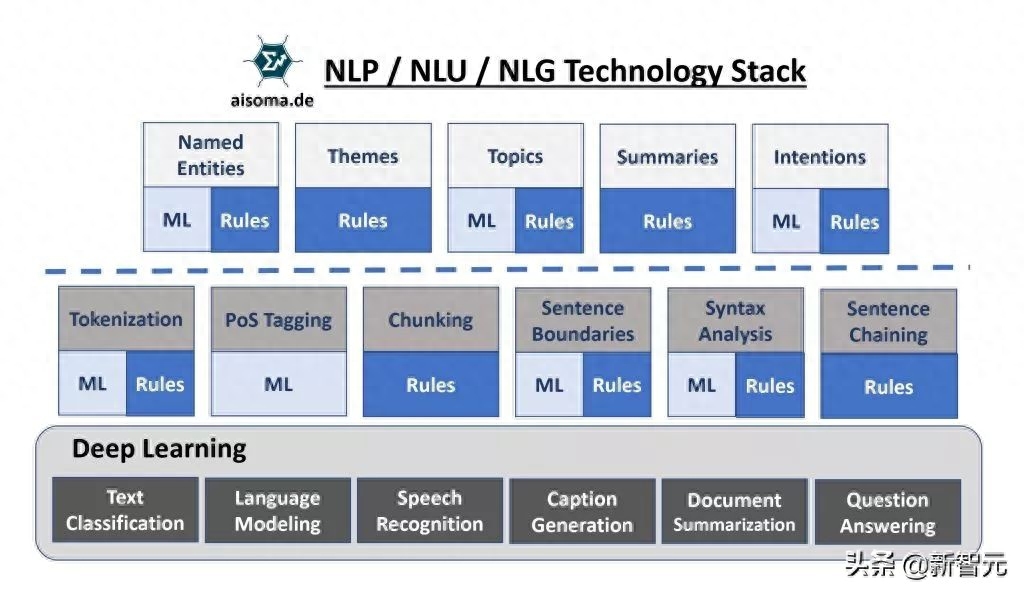
Natural language processing (NLP) is a subfield of computer science, information engineering, and artificial intelligence that involves the interaction of computers with human (natural) language, especially how to write computer programs to Process and analyze large amounts of natural language data.
Natural language processing challenges typically include speech recognition, natural language understanding, and natural language generation.
9. Condition Monitoring/Predictive Maintenance Solution Architecture
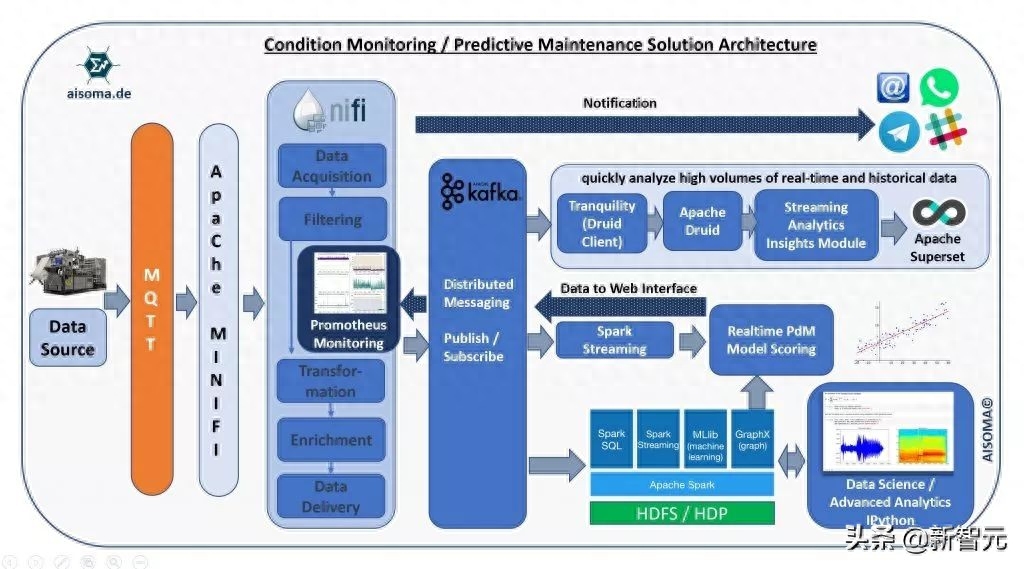
10. Artificial Intelligence in Marketing
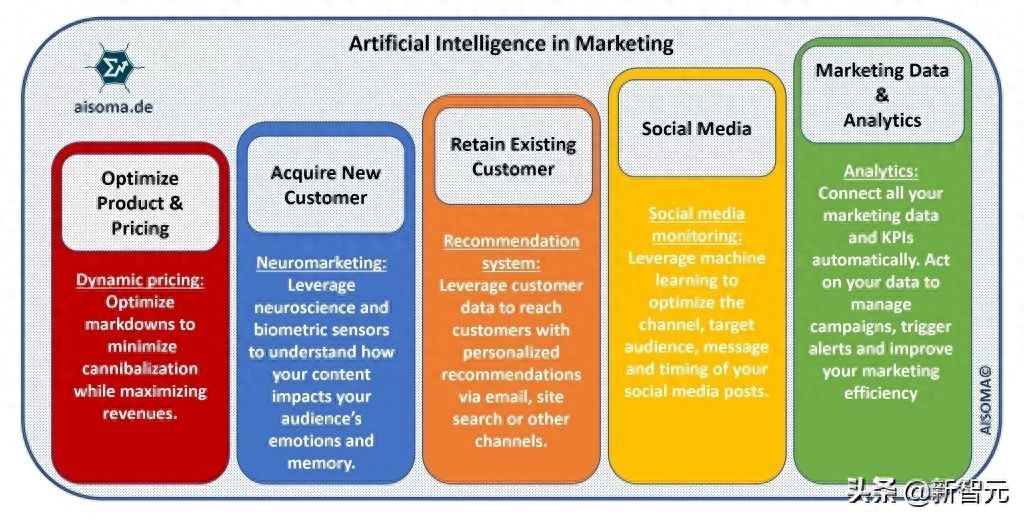
Original address:
https://www.aisoma.de/10-useful-ai-ml-slides/
Articles are uploaded by users and are for non-commercial browsing only. Posted by: Lomu, please indicate the source: https://www.daogebangong.com/en/articles/detail/10-zhang-tu-kan-dong-AI-ji-qi-xue-xi.html

 支付宝扫一扫
支付宝扫一扫 
评论列表(196条)
测试